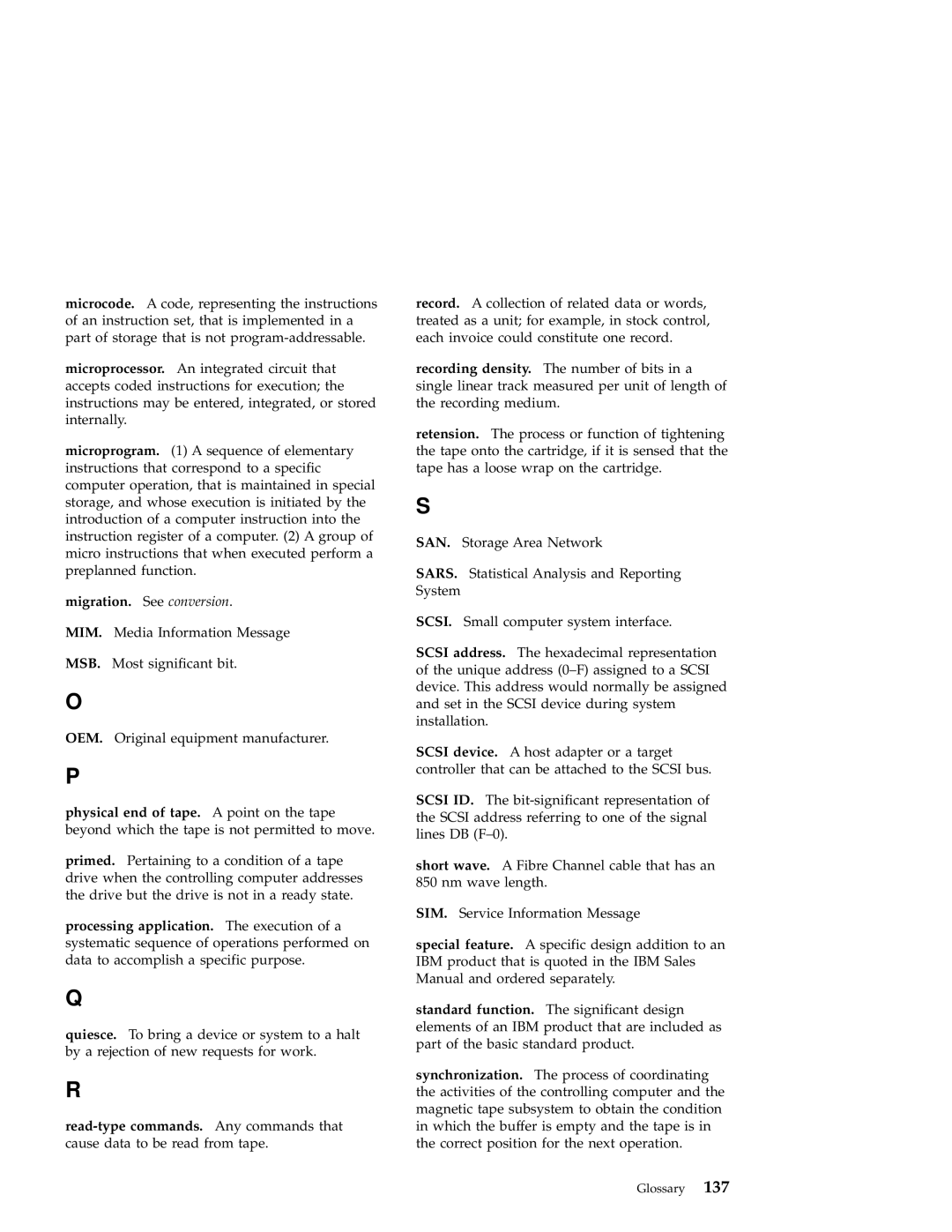microcode. A code, representing the instructions of an instruction set, that is implemented in a part of storage that is not
microprocessor. An integrated circuit that accepts coded instructions for execution; the instructions may be entered, integrated, or stored internally.
microprogram. (1) A sequence of elementary instructions that correspond to a specific computer operation, that is maintained in special storage, and whose execution is initiated by the introduction of a computer instruction into the instruction register of a computer. (2) A group of micro instructions that when executed perform a preplanned function.
migration. See conversion.
MIM. Media Information Message
MSB. Most significant bit.
O
OEM. Original equipment manufacturer.
P
physical end of tape. A point on the tape beyond which the tape is not permitted to move.
primed. Pertaining to a condition of a tape drive when the controlling computer addresses the drive but the drive is not in a ready state.
processing application. The execution of a systematic sequence of operations performed on data to accomplish a specific purpose.
Q
quiesce. To bring a device or system to a halt by a rejection of new requests for work.
R
record. A collection of related data or words, treated as a unit; for example, in stock control, each invoice could constitute one record.
recording density. The number of bits in a single linear track measured per unit of length of the recording medium.
retension. The process or function of tightening the tape onto the cartridge, if it is sensed that the tape has a loose wrap on the cartridge.
S
SAN. Storage Area Network
SARS. Statistical Analysis and Reporting System
SCSI. Small computer system interface.
SCSI address. The hexadecimal representation of the unique address
SCSI device. A host adapter or a target controller that can be attached to the SCSI bus.
SCSI ID. The
short wave. A Fibre Channel cable that has an 850 nm wave length.
SIM. Service Information Message
special feature. A specific design addition to an IBM product that is quoted in the IBM Sales Manual and ordered separately.
standard function. The significant design elements of an IBM product that are included as part of the basic standard product.
synchronization. The process of coordinating the activities of the controlling computer and the magnetic tape subsystem to obtain the condition in which the buffer is empty and the tape is in the correct position for the next operation.
